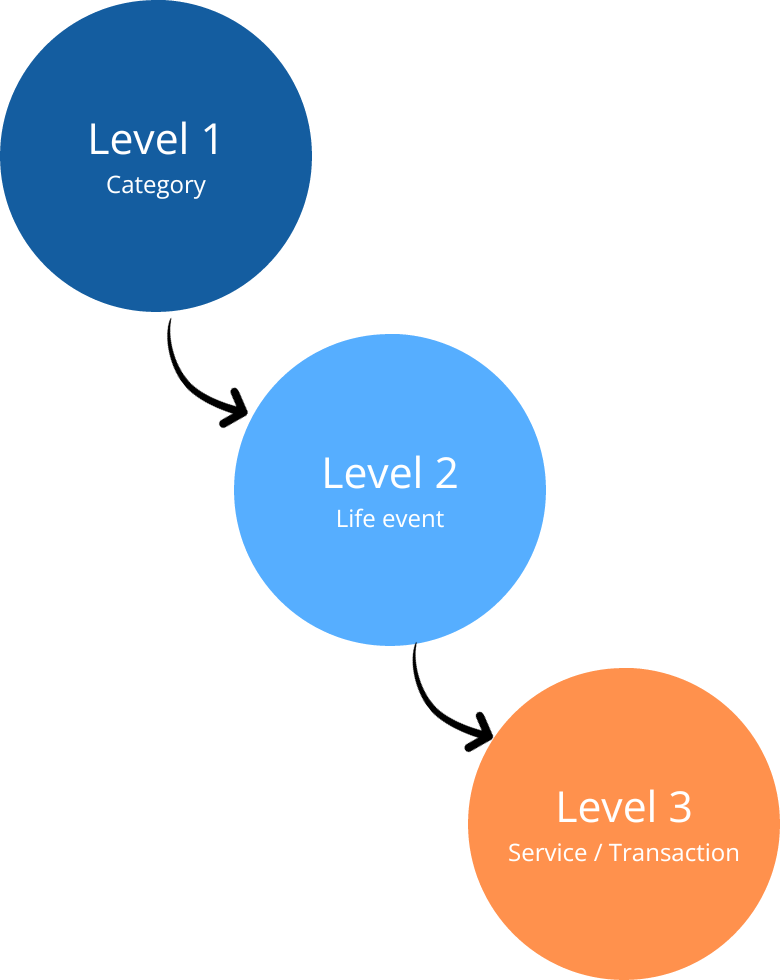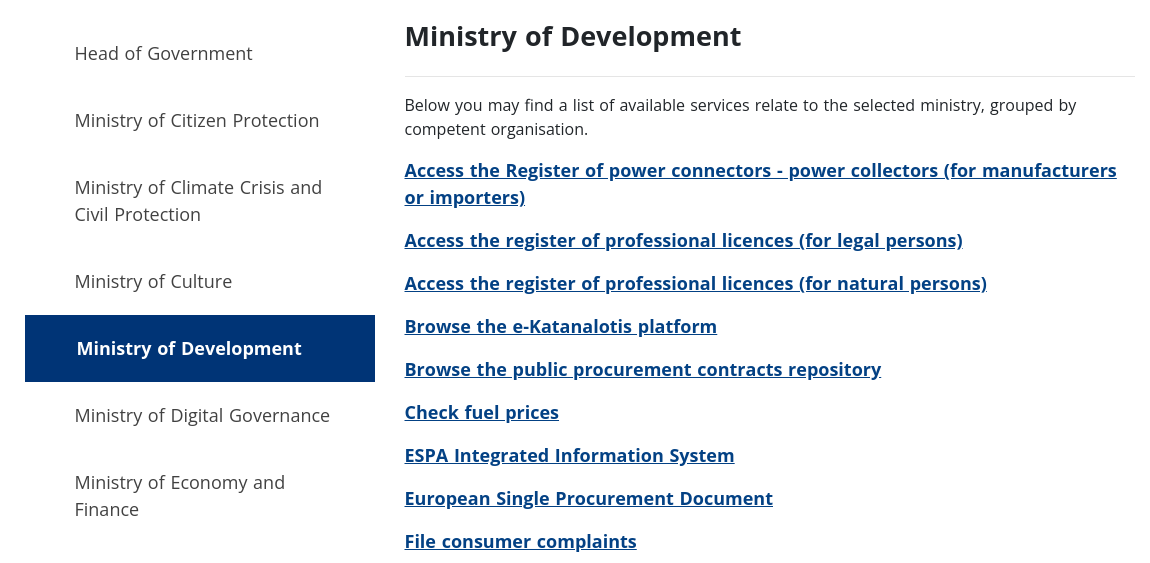1. The structure of gov.gr
Citizen-centric structure
The structure of the services provided by the Unified Digital Portal gov.gr is citizen-centric, meaning it is designed to meet the needs of citizens rather than being based on the organization of the Public Administration, ministries, or other services. In order to facilitate easier navigation, all services have been organized into 3 levels of organization and navigation.
Examples
Some examples of the gov.gr service structure are as follows:
- Citizen and Daily Life > Responsible Declaration and Authorization > Issuance of Responsible Declaration
- Health and Welfare > Responsible Declaration and Authorization > Issuance of Responsible Declaration
- Education > School Enrollment > Enrollment in Public Vocational Training Institutes
- Property and Taxes > Citizen Taxation > Change of Tax Registry Information
- Citizen and Daily Life > Transportation > Temporary Driving Permit

Level 1 - Category
At Level 1, the provided services are categorized into 11 broader groups or categories that correspond to policy areas, themes, or aspects of citizens' lives (e.g., family, business activity, education, health and welfare, etc.).
Level 2 - Life Event
For better organization of the services, the above broader groups are further divided into subcategories, each of which groups closely related services that correspond to life events or citizens' needs (e.g., Family Status, School Enrollment, Property Management, etc.).
Level 3 - Service / Transaction
At the third and final level, the actual services and transactions offered by gov.gr are listed (e.g., Issuance of Authorization, Birth Certificate, Enrollment in Public Vocational Training Institutes, Income Tax Declaration, Temporary Driving Permit, etc.).

Classic Structure
In addition to the citizen-centric structure, gov.gr also maintains the classic organization of services based on ministries, agencies, or independent authorities. This is done to facilitate citizens and businesses familiar with the internal organization of the public administration or service providers they may need.
In the image, an example of navigation based on ministries is shown: citizens have the option to view all services offered by a ministry. The available services are grouped based on the organization or authority, whether they fall under a supervised entity or directly under a ministry.
